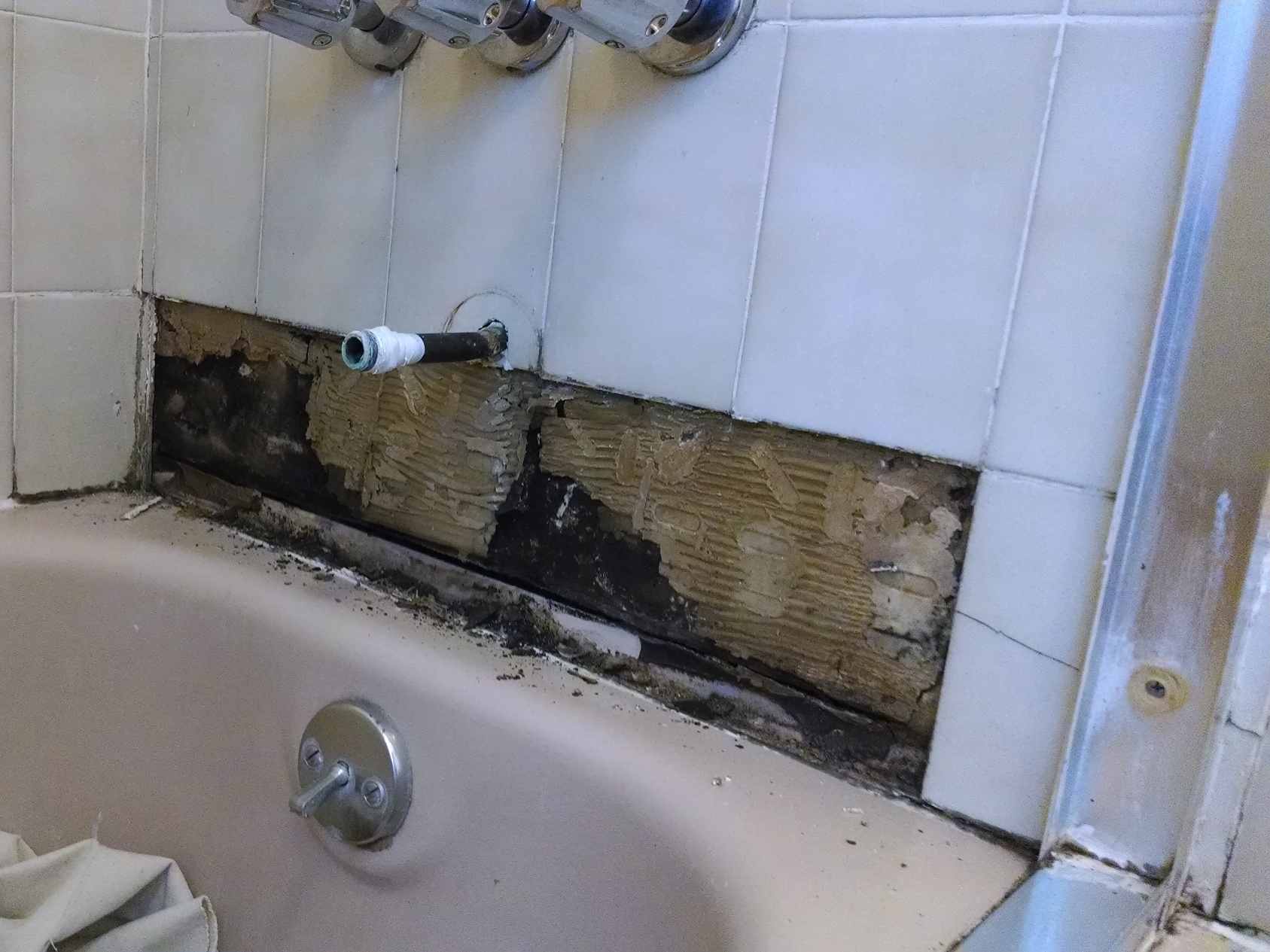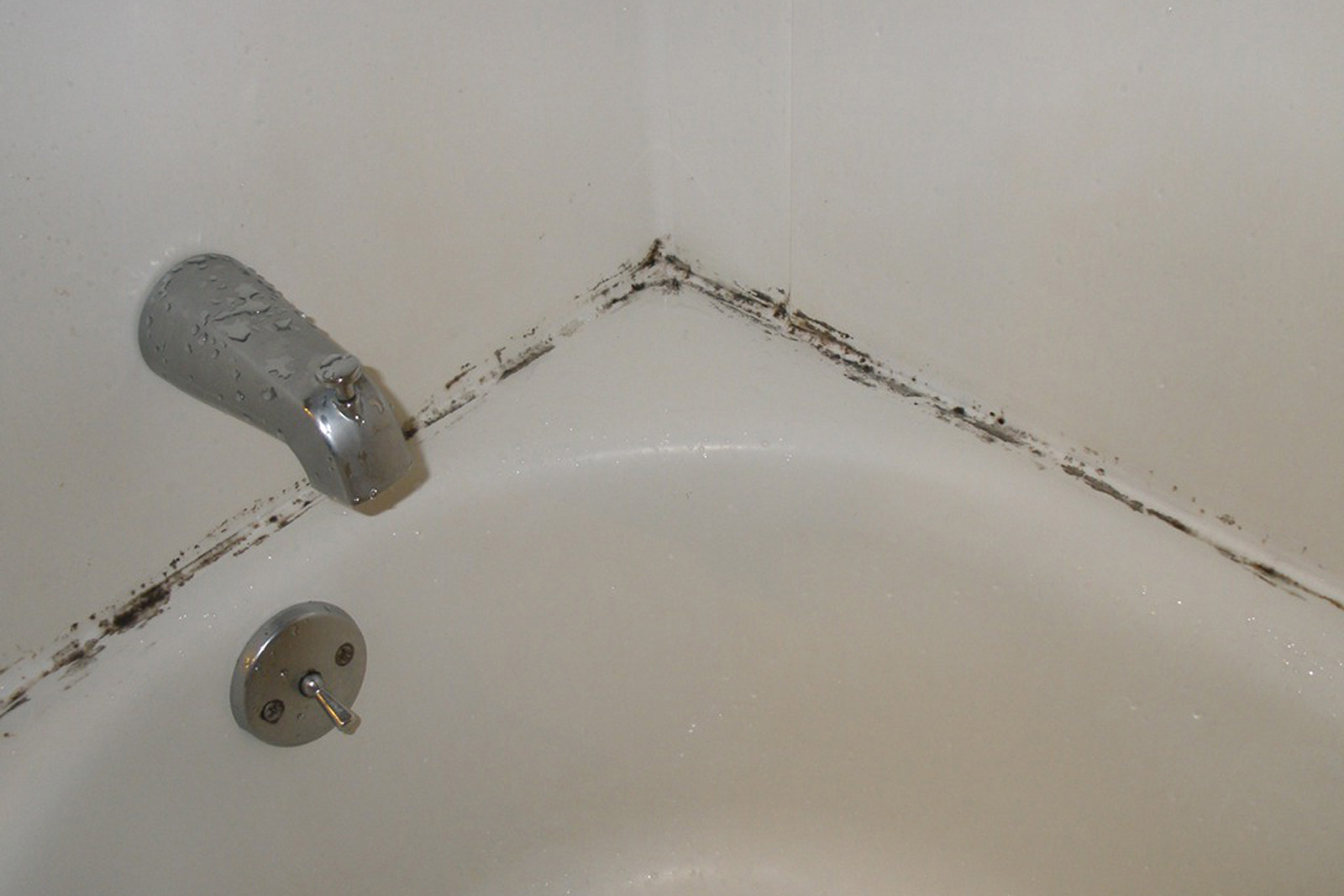Understanding Black Mold

Black mold, also known as Stachybotrys chartarum, is a type of fungus that thrives in damp and humid environments. It’s often found in bathrooms, basements, and other areas prone to water damage. Black mold is notorious for its dark, velvety appearance and distinctive musty odor.
Characteristics of Black Mold
Black mold is a type of fungus that grows in dark, damp environments. It’s often found in bathrooms, basements, and other areas prone to water damage. Black mold is known for its dark, velvety appearance and distinctive musty odor. It’s a resilient fungus that can survive in various conditions, including low light, low temperatures, and high humidity.
Health Risks Associated with Black Mold Exposure, Black mold in my bathroom
Black mold exposure can pose serious health risks, especially for individuals with respiratory problems or weakened immune systems. It can trigger allergies, asthma attacks, and even more severe health issues. The spores released by black mold can irritate the respiratory system, causing symptoms like coughing, sneezing, and difficulty breathing.
Common Symptoms of Black Mold Exposure
Black mold exposure can lead to various symptoms, including:
- Coughing and wheezing
- Runny nose and congestion
- Skin irritation and rashes
- Headaches and dizziness
- Fatigue and lethargy
- Eye irritation and watery eyes
If you experience any of these symptoms and suspect black mold exposure, it’s crucial to consult a medical professional.
Identifying Black Mold in Bathrooms
Black mold can be difficult to spot, but there are some telltale signs to watch out for in your bathroom:
- Dark, velvety patches on walls, ceilings, grout, or other surfaces
- A musty or earthy odor
- Signs of water damage, such as leaks, condensation, or dampness
- Discoloration or staining on surfaces
If you notice any of these signs, it’s essential to investigate further and take steps to address the underlying moisture problem.
Causes of Black Mold in Bathrooms: Black Mold In My Bathroom

Bathrooms are notorious for being breeding grounds for black mold. Their inherent dampness, coupled with frequent water use, creates the perfect storm for this unwelcome guest. Let’s delve into the key culprits responsible for black mold’s unwelcome presence.
Moisture and Humidity
Moisture is the lifeblood of mold. It thrives in damp environments, and bathrooms are prime real estate. From steamy showers to lingering condensation, bathrooms often maintain a high humidity level, providing an ideal breeding ground for mold. The constant presence of water, whether from leaks, spills, or even everyday use, creates the perfect conditions for mold spores to flourish.
Poor Ventilation
Poor ventilation exacerbates the problem by trapping moisture within the bathroom. Without proper airflow, humidity lingers, creating a moist environment where mold can thrive. Bathrooms without adequate ventilation, such as exhaust fans, are more susceptible to mold growth.
Common Bathroom Practices
Many common bathroom practices can contribute to mold growth.
- Leaving Wet Towels: Wet towels left to air dry on the floor or in a damp environment create a breeding ground for mold.
- Leaving Wet Surfaces: Leaving wet surfaces, such as shower walls and floors, after bathing allows moisture to linger, promoting mold growth.
- Leaky Faucets: Leaky faucets provide a constant source of moisture, creating ideal conditions for mold to thrive.
- Lack of Regular Cleaning: Neglecting regular cleaning allows mold to build up, creating a more significant problem over time.
Preventing and Removing Black Mold

Black mold is a common problem in bathrooms, especially in humid climates. Fortunately, there are steps you can take to prevent black mold from growing in the first place, and if it does appear, you can remove it effectively. Let’s dive into the details.
Preventing Black Mold
Preventing black mold growth is the best way to keep your bathroom clean and healthy. Here’s how to do it:
- Keep the Bathroom Dry: The most important step in preventing black mold is to keep your bathroom dry. After showering or bathing, wipe down the walls, floor, and shower stall with a towel. This will remove excess moisture and prevent it from accumulating.
- Proper Ventilation: Ensure your bathroom has adequate ventilation. A fan should be turned on during and after showering or bathing to remove moisture from the air. Consider installing an exhaust fan if your bathroom doesn’t have one, or if the existing fan isn’t powerful enough.
- Fix Leaks: Leaky faucets, pipes, and showerheads can create damp spots that are ideal for black mold growth. Repair any leaks promptly to prevent moisture buildup.
- Clean Regularly: Regularly cleaning your bathroom is crucial. This includes wiping down surfaces, scrubbing the shower stall and tub, and cleaning the grout. A regular cleaning routine helps to prevent the buildup of moisture and grime that can encourage mold growth.
- Use a Dehumidifier: If your bathroom is particularly humid, consider using a dehumidifier to remove excess moisture from the air. This is especially helpful in humid climates or if you have a lot of people using the bathroom.
Removing Black Mold
If black mold has already taken hold in your bathroom, don’t panic! You can remove it with a little elbow grease and the right supplies. Here’s a step-by-step guide:
- Safety First: Always wear protective gear when working with mold, including gloves, a mask, and eye protection. This will help to prevent you from inhaling mold spores.
- Assess the Situation: Determine the extent of the mold growth. If it’s a small area, you can likely remove it yourself. However, if the mold is extensive or in hard-to-reach areas, it’s best to consult a professional.
- Prepare the Area: Before you start cleaning, open windows and doors to improve ventilation. Remove any items from the area that might be affected by the cleaning solution.
- Clean the Mold: Use a cleaning solution specifically designed for mold removal. Follow the instructions on the product label carefully.
- Dry the Area: After cleaning, dry the affected area thoroughly with a towel or fan. This will help to prevent the mold from growing back.
- Prevent Future Growth: Once the mold is removed, address the underlying cause of the moisture problem to prevent it from returning.
